

X
This site uses cookies. By continuing to use this site you agree to our use of cookies. To find out more, see our Privacy Policy and Cookie Policy.

June kicks off a summer of festivities as the world celebrates Pride month. The event has evolved considerably over the years and now celebrates the whole LGBTQ+ community and recognises those who are homosexual, bisexual, transgender and non-binary.
When it comes to celebrating Pride, it’s important for businesses to show the LGBTQ+ community authentic support, which is something both employees and customers alike will appreciate. If supporting Pride is important to a business and its values, then it is important to be informed
To help your Pride plans, we’ve explored the different Pride flags available and what they represent so your businesses can celebrate the whole LGBTQ+ community.
While Pride is generally associated with a rainbow flag, there are in fact many different designs, representing a range of communities. Though in our experience, most businesses opt for the ‘traditional’ rainbow pride flag or a variation of the straight allies flag:
Perhaps the best-known design, the ‘traditional’ Pride flag features a rainbow pattern with multiple horizontal colours. It has been adapted over the years, including a ‘Philadelphia Pride’ flag and a modern flag with a triangle shape. These symbolise the progression of society’s understanding of sexual fluidity.
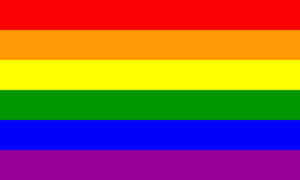
Bisexual Pride flags represent the bisexual community – those who are attracted to both sexes. They come in three horizontal stripes of pink, purple and blue. Blue represents heterosexual attraction, pink represents homosexual attraction and purple represents the crossover of both.
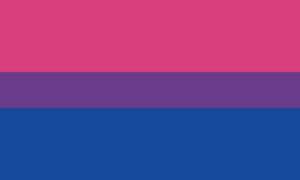
Pansexual Pride flags feature three horizontal stripes in magenta (purple-pink), yellow and cyan (blue). Pansexuality refers to an attraction to anybody regardless of their sex. Magenta represents female, cyan represents male and yellow represents non-binary.
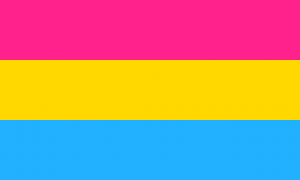
Asexual Pride flags come in four colours: a black, then grey, then white and a final purple horizontal stripe. The asexual community generally does not have sexual desires for any sex. The black represents this community, while the grey symbolises the “grey area” between sexual and asexual. White symbolises sexuality and the final purple stripe means community.
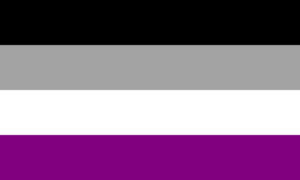
The Lesbian Pride flag has a colour spectrum of purples, pinks, oranges and reds. The number of stripes varies depending on the design, and the meaning of each colour is open to debate.
Generally, red means gender non-conformity and oranges mean independence and community. White means unique relationships, while pinks or purples refer to love, femininity and freedom.
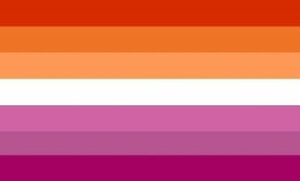
The Polyamorous Pride flag comes in three horizontal colours: blue, then red, then black. It also features a gold-coloured pi symbol, which is the Greek letter for P, representing polyamory. As a symbol of mutually consensual multi-partner relationships, blue represents honesty. Red represents passion and black means solidarity for those who feel pressured to hide their relationships from the world.
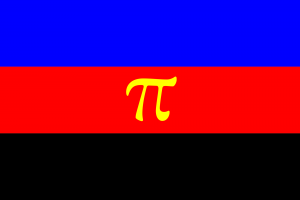
The Transgender Pride flag comprises five horizontal stripes – two blue at the top and bottom, then pink in between and a final white in the middle. The transgender community identify as a different gender from what they were assigned at birth. It is a nod to the gender norms we are given at birth: blue for boys and pink for girls. The white stripe represents those who are transitioning.
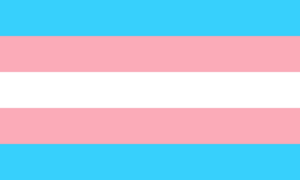
The Genderfluid Pride flag includes all gender identities such as masculinity, femininity and androgyny. It comes with five horizontal stripes: pink, then white, then purple, then black, then blue. Pink means female and blue means male, while white represents those who don’t identify with any gender. Black represents third gender and pangender communities, while purple is a mixture of femininity and masculinity.

There is a place for everybody in Pride, including those who identify as heterosexual or cisgender. The Straight Allies Pride flag features a rainbow triangle symbol set against a black and white striped background. The triangle represents an ‘A’ or ‘ally’ – signifying support of the LGBTQ+ community.
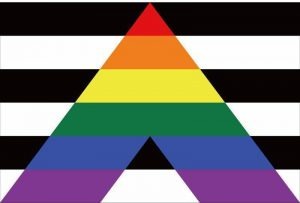
The broad spectrum of communities deserves to be celebrated this Pride. As an ever-progressive movement, designs are always changing. This is why we offer a customised design and printing service. For example. we adapted the traditional gay pride flag to create a bespoke LGBTQ+ design for our longstanding client Taylor Wimpey:
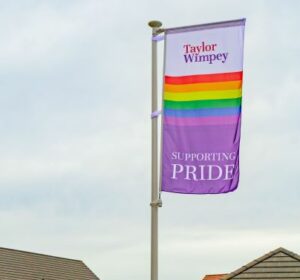
We also guarantee high levels of quality when it comes to our Pride flags, so they can be used year after year. With additional options such as anti-fray too, we’ll provide you with a flag that will stand the test of time.
Looking for top tips on finding the right flagpole for your premises? Read our latest blog post and get the lowdown on buying a flagpole which suits your business’s requirements.
For more information on flagpoles, flags or installation advice, speak to one of our experienced team. Browse our range of Pride flags here and find the right flag for your business today.